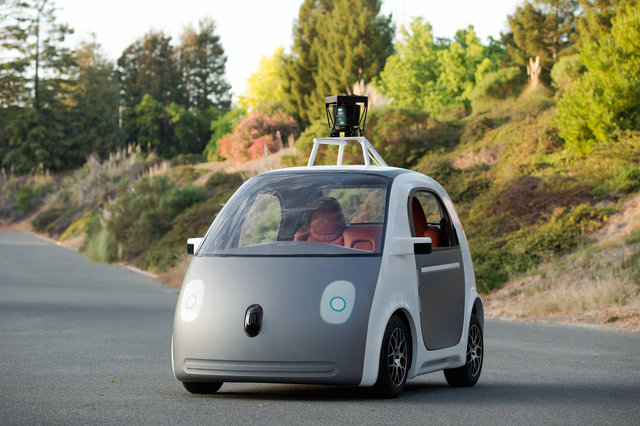U.S. DOT Pushes For Rules On Vehicle-To-Vehicle Communication In Cars
The U.S. Department of Transportation (DOT) announced recently that it's going to have official rules for Vehicle-to-Vehicle (V2V) communication by the end of the year.
This is a rather aggressive timeline considering we're just now beginning to see self-driving cars being allowed on public roads. However, it may still take years before car manufacturers implement the V2V technology, which is probably why the U.S. government is in a hurry to have the rules set now rather than later.
Zero Traffic Fatalities
V2V technology may not be mandatory for self-driving cars to work, but it could still improve the safety of all cars in the future, not just autonomous ones.
This is also the primary motivation behind the DOT's aggressive push. The DOT believes that V2V technology could help reduce accidents by alerting drivers on their dashboards when an accident happens somewhere close by and on their route.
The DOT also wants the FCC to allocate radio spectrum that is clear of any interference to ensure that V2V-enabled cars can communicate without issue.
Ultimately, the U.S. government wants a future of "zero traffic fatalities," which could be enabled by V2V communication as well as other technologies that enable safer self-driving cars.
Privacy And Security Issues
Although the U.S. government's main priority right now is to reduce traffic accidents, there are some other issues that may not be considered in the initial rules, such as privacy and security.
Get Tom's Hardware's best news and in-depth reviews, straight to your inbox.
If cars end up communicating with each other all the time, that also means someone should be able to use that communication data to track where a car has been or where it's going. Some local police departments are already being accused of infringing on drivers' privacy by constantly photographing cars' license plate numbers with public cameras and then cobbling together a history of their locations to identify where they've been. V2V communication would track drivers' whereabouts much more easily and more accurately, so it could become an even bigger privacy issue.
The second major issue could be one of security. We're already seeing many auto makers jump head first into adopting new technology without apparently giving a second thought to how that could affect the security of their cars.
For instance, just because it's convenient, they've allowed car unlocking through Bluetooth, a protocol that was never designed for secure communications from the ground up, even if some security features were added later on. Others even update their cars over-the-air through connections that aren't encrypted and could be easily tampered with through man-in-the-middle attacks.
Through V2V technology, all cars would communicate with each other, which means there's the possibility that cars could be hacked through those communication protocols.
These are issues the U.S. government should give more thought to before it tells auto makers how to implement the technology in an unsecure manner.
Follow us @tomshardware, on Facebook and on Google+.
Lucian Armasu is a Contributing Writer for Tom's Hardware US. He covers software news and the issues surrounding privacy and security.
-
ericburnby More scare tactics. Automobiles already use multiple network protocols for communication in vehicles. And the powertrain BUS (engine, transmission, bakes) is typically separate from other buses and only way to talk to them is through passing messages. You can't "take over" or "reprogram/flash" your engine computer (for example) by hacking into the car cellular connection.Reply
As to communicating between cars, there's a simple solution. DON'T store the data. And why would you? If a car in front of you hits the brakes which then signals your car to also apply brakes to avoid a collision, what point is there to store this data? Likewise, if an accident ahead is slowing traffic, why would you want to store the message your car received warning you about it? -
TwoDigital Did they *NOT* see this coming? People have been talking about automated roadways and self-driving cars since at least the 1970s... You'd think they wouldn't wait until the cars were out on the road all over the country before they started THINKING about what an initial standard would look like.Reply -
FITCamaro What point is there in storing the message? Accident information and evidence. An accident is not always going to be avoided. And sorry but I don't want my car automatically braking.Reply
Not to mention that relying on V2V communication via radio waves for accident avoidance makes it insanely easy for someone to cause a massive accident since they could easily just jam all the signals. -
falchard I feel a v2v and vehicle to city grid system would alleviate alot of traffic. Currently I use my phone to adjust for traffic. But it is dependent on other phones connected. With vehicle to city grid its possible to have a more real time understanding of traffic. The city can also manage traffic lights to maximize flow or trip time if it has access to vehicle destination. The problem is the city will probably use the information to ticket me more and not alleviate traffic.Reply

